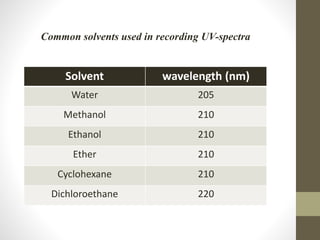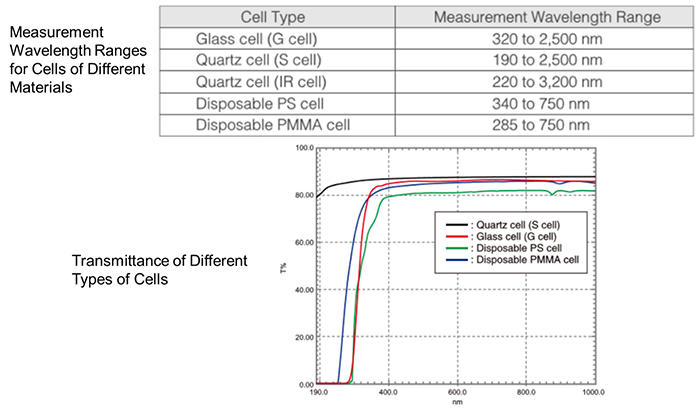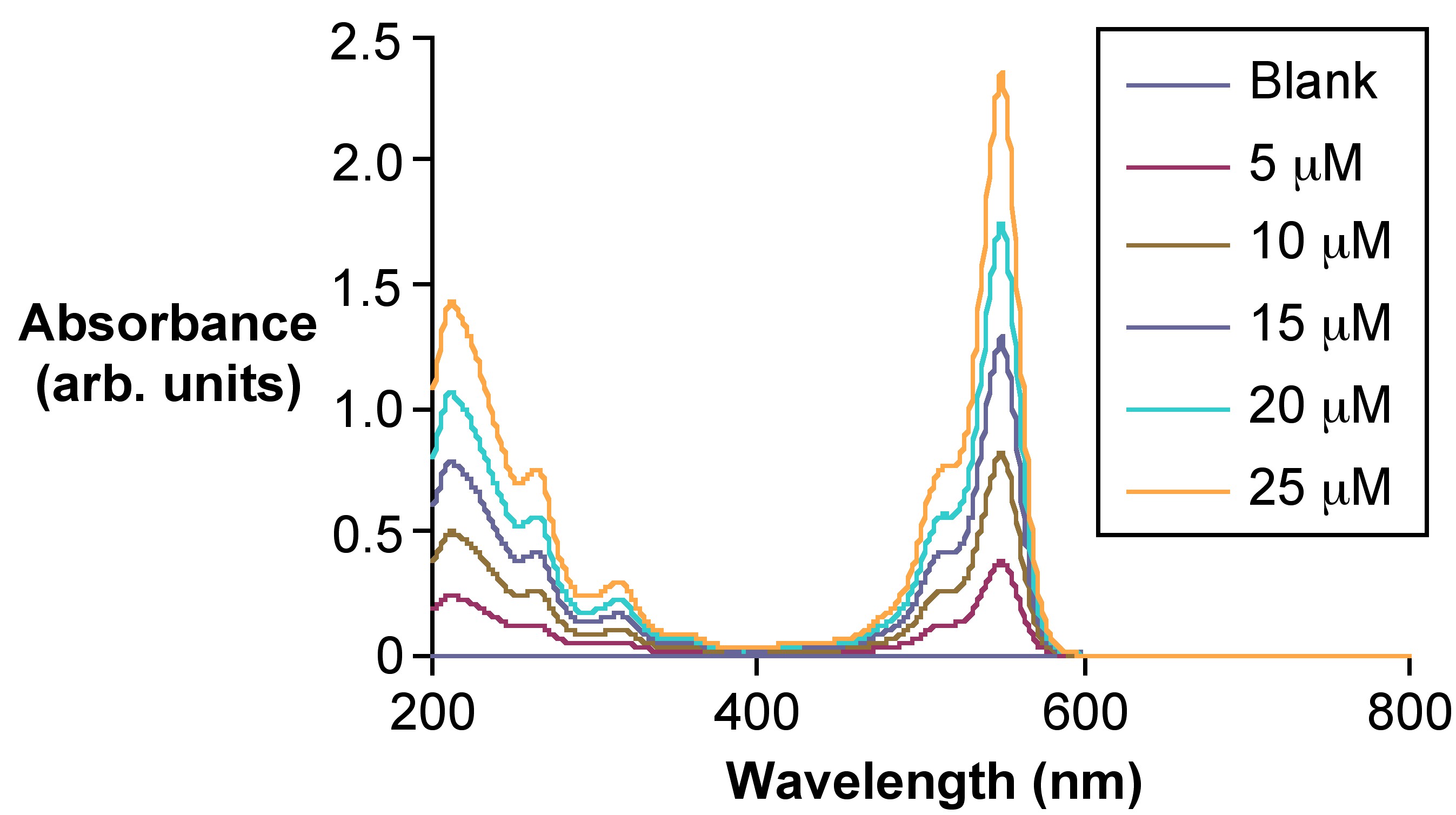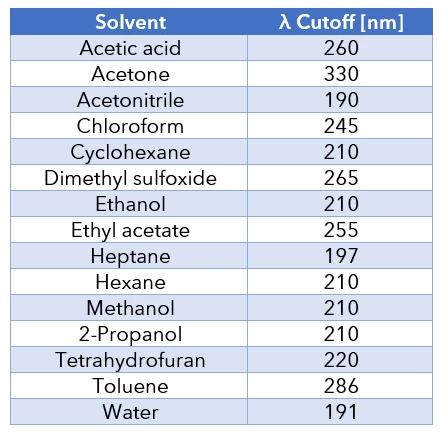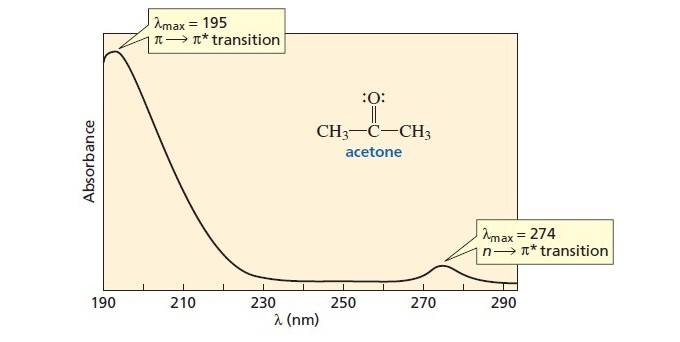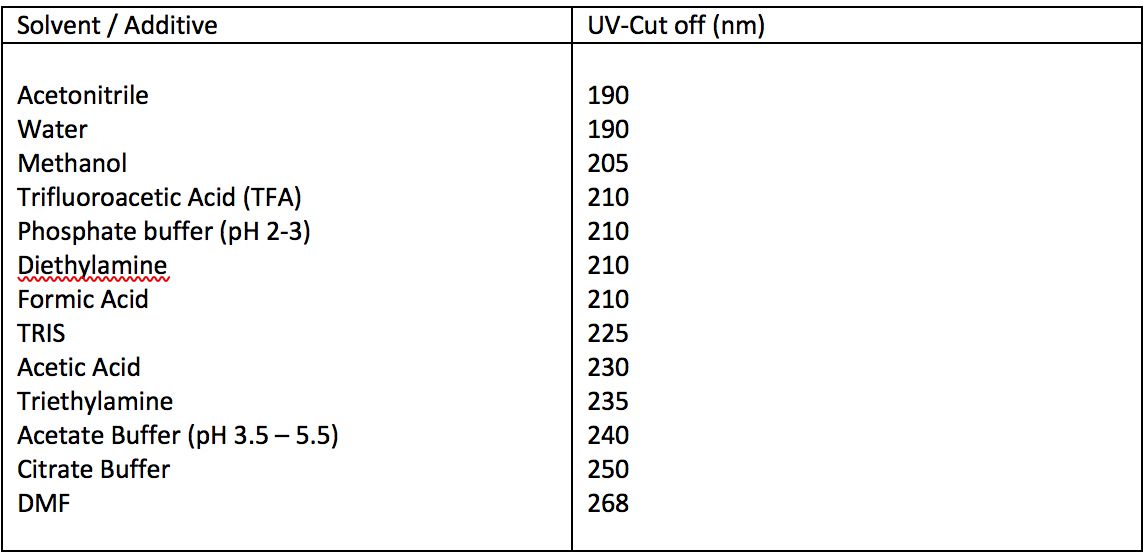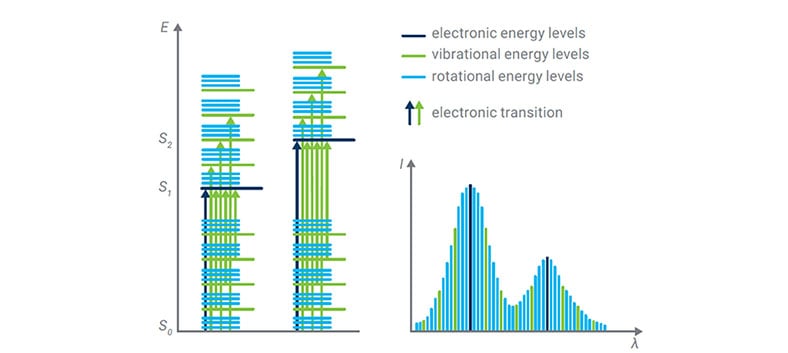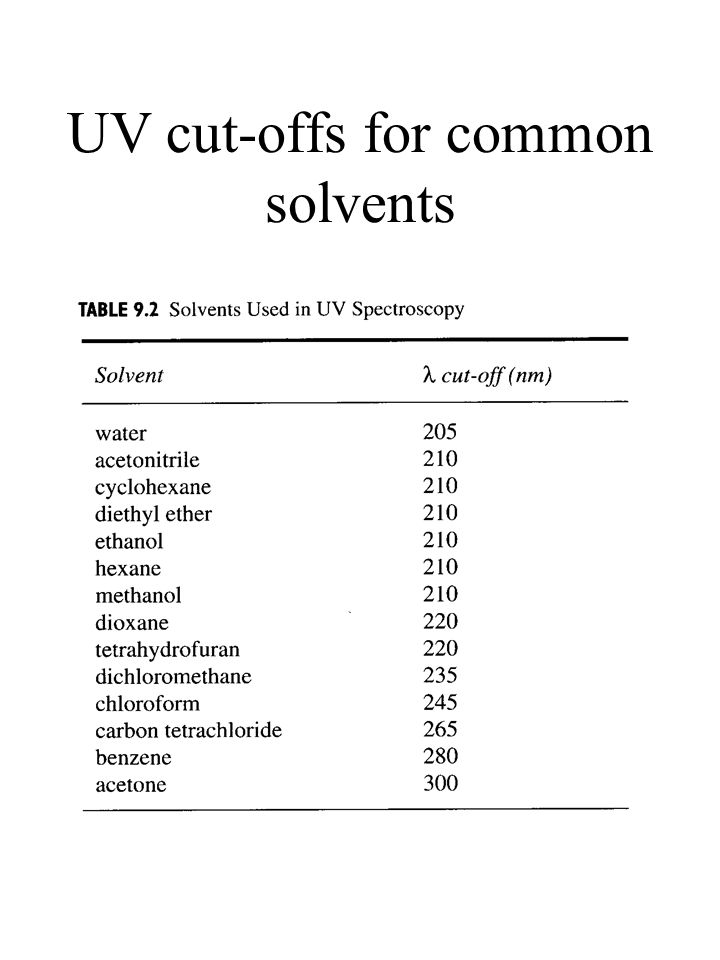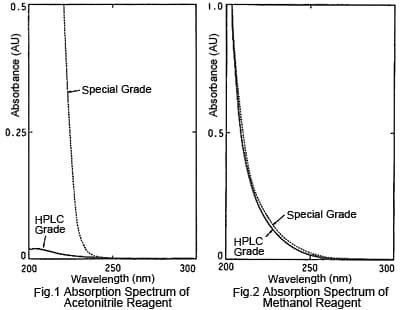
Differences Between Using Acetonitrile and Methanol for Reverse Phase Chromatography : SHIMADZU (Shimadzu Corporation)
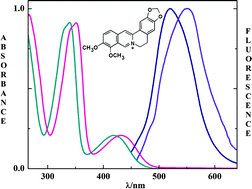
Solvent effect on the UV/Vis absorption and fluorescence spectroscopic properties of berberine - Photochemical & Photobiological Sciences (RSC Publishing)
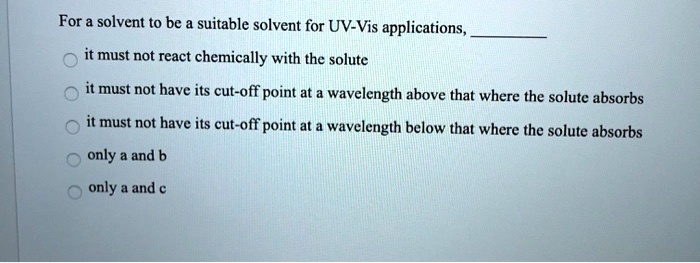
SOLVED: For solvent to be suitable solvent for UV-Vis applications it must not react chemically with the solute it must not have its cut-off point at wavelength above that where the solute
Solvent Dependency of the UV-Vis Spectrum of Indenoisoquinolines: Role of Keto-Oxygens as Polarity Interaction Probes | PLOS ONE





